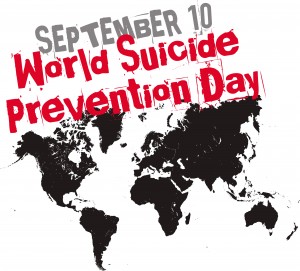
Approximately 804,000 people die by suicide each year – about one person every forty seconds (World Health Organization 2014). With three-quarters of suicides occurring in low and middle income countries, suicide is a major global health concern. The recent financial crisis has led to researchers re-examining the links between recession, unemployment and suicide (Barr et al. 2012; Reeves et al. 2014a).
The individual-level relationship between unemployment and suicide is not new (Platt 1984). Alongside mental illness, relationship conflict and previous suicide attempts (World Health Organization 2014), job loss greatly heightens the risk of suicide. Therefore, during times of high unemployment when many individuals lose their jobs or are faced with job and financial insecurity, suicide rates often increase, particularly among men.
Across Europe and North America, Reeves et al (2014b) estimated that approximately 10,000 excess suicides took place in 2008-10; so called “economic suicides”. The increase in the suicide rate associated with the recession was also four times higher among men than women, exacerbating the existing gender gap in suicide.
A limitation of the existing studies examining the influence of the recession, unemployment and suicide is that they often do not take into account prior trends in the suicide rate and use data from a restricted number of countries, most often located in Western Europe. These limitations prompted the recent study by Nordt and colleagues published in the Lancet Psychiatry and covering four world regions.

The WHO estimates that worldwide, someone dies from suicide every 40 seconds.
Methods
- The study is a longitudinal ecological analysis of suicide data taken from the World Health Organization mortality database.
- The time period covers 2000 to 2011 and the geographic area includes 63 countries, which were classified into either:
- Americas (including Argentina, Mexico and the United States)
- Northern and Western Europe (such as Germany, Estonia and the United Kingdom)
- Southern and Eastern Europe (including Greece, Poland and Russia)
- Non-Americas and Non-Europe (like Australia, South Africa and South Korea).
- Economic data, including the unemployment rate and Gross Domestic Product were extracted from the International Monetary Fund’s world economic outlook database.
- Suicides per 100,000 population were analysed using 504 age-specific and sex-specific groups in which a random coefficient model was used to calculate intercepts and slopes for each of the groups for the years 2000 to 2011.
- The authors tested a number of different ways to model the unemployment rate to investigate potential non-linearity and time lags of between six and 12 months.
Results
The authors found that the relative risk of suicide associated with unemployment was increased by 20 to 30% across all geographic regions during 2000 to 2011. The association was non-linear and including a time-lag of six months was the best fit with the data. They predicted that an increase in the unemployment rate from 3 to 6% was associated with a 6.1% increase in the suicide rate, but an equivalent rise in the unemployment rate from a higher baseline, for example from 12 to 15% would result in a smaller 2.2% increase in suicide.
Their final statistical model predicted that approximately 233,000 suicides occurred each year, of which 45,000, or nearly one in five, were related to unemployment. When examining the impact of the recession, they estimated that suicides related to unemployment rose by nearly 4,983 from 41,148 in 2007 to 46,131 in 2009. The association between unemployment and suicide was similar in each of the regions examined, as was the influence of gender.
Men had a four-fold higher risk of suicide in all four world regions; with rates highest among men in the Southern and Eastern European region and among women in the Non-Americas and Non-Europe group. Overall, the authors found that suicide declined over the time period studied; however there were some differences between world regions. Notably, the relative risk of suicide increased by 0.7% per year in the Americas, with most other regions experiencing a decline or remaining stable.

The study suggests that unemployment might account for 9 times as many deaths by suicide every year (about 45,000) as the recent economic crisis (around 5,000 excess suicides).
Conclusions
The authors interpret their results in terms of feelings of job insecurity. In countries where unemployment is less common, they think an unexpected rise in the unemployment rate may generate more worry and insecurity compared to countries with generally higher unemployment. Similarly, they believe added work stress and job insecurity that is often related to corporate downsizing and restructuring may explain the time lag whereby the suicide rate was predicted to increase six months prior to an increase in unemployment.
Strengths and limitations
- The key strengths of this study were its long time series, wide coverage of countries and ability to quantify the key findings. However, the research only covered a small proportion of certain areas, roughly 12% of Africa and 54% of Asia, therefore the results for the Non-Americas and Non-Europe region may not be representative.
- It also cannot tell us about other related outcomes; suicide is an extreme outcome and often not well recorded in some countries. It is likely that suicide represents only ‘the tip of the iceberg’, other suicidal behaviours and more common mental disorders like anxiety and depression may be similarly affected.
- In addition, the authors only examined suicides associated with unemployment during the recent economic recession. Austerity measures in response to the recession as well as financial strain, job insecurity and relationship breakdown may all increase the risk of suicide during a recession, not just unemployment.

The researchers found that suicide rates increased 6 months before a rise in unemployment.
Summary
Despite it being reported in a number of articles covering this piece of research, it cannot be concluded from this study that unemployment “causes” suicide (Boseley 2015; Cummins 2015). This is especially so given the finding that lower baseline unemployment was related to greater increases in suicides following a rise in unemployment.
With news that the suicide rate among men in the UK is now at its highest level since 2001 (ONS 2015), we nevertheless should not underestimate the importance of this study. As the authors recommend, prevention strategies focused on the unemployed and on employment and its conditions are essential in times of both economic prosperity and uncertainty.
If you need help
If you need help and support now and you live in the UK or the Republic of Ireland, please call the Samaritans on 116 123.
If you live elsewhere, we recommend finding a local Crisis Centre on the IASP website.
We also highly recommend that you visit the Connecting with People: Staying Safe resource.
Links
Nordt C, Warnke I, Seifritz E, Kawohl W Modelling suicide and unemployment: a longitudinal analysis covering 63 countries, 2000–11. The Lancet Psychiatry. doi:10.1016/S2215-0366(14)00118-7 [Abstract]
Barr B, Taylor-Robinson D, Scott-Samuel A, McKee M, Stuckler D (2012) Suicides associated with the 2008-10 economic recession in England: time trend analysis. BMJ 345. doi:10.1136/bmj.e5142
Boseley S (2015) Unemployment causes 45,000 suicides a year worldwide, finds study. The Guardian. Accessed 19/02/2015
Cummins I (2015) One in five suicides caused by unemployment but the lead-up to lay-off hurts most. The Conversation. Accessed 19/02/2015
ONS (2015) Suicides in the United Kingdom, 2013 Registrations. Accessed 19/02/2015
Platt S (1984) Unemployment and suicidal behaviour: A review of the literature. Social Science & Medicine 19 (2):93-115. doi:http://dx.doi.org/10.1016/0277-9536(84)90276-4
Reeves A, McKee M, Gunnell D, Chang S-S, Basu S, Barr B, Stuckler D (2014a) Economic shocks, resilience, and male suicides in the Great Recession: cross-national analysis of 20 EU countries. The European Journal of Public Health. doi:10.1093/eurpub/cku168 [PubMed abstract]
Reeves A, McKee M, Stuckler D (2014b) Economic suicides in the Great Recession in Europe and North America. The British Journal of Psychiatry 205 (3):246-247 [PubMed abstract]
World Health Organization (2014) Preventing suicide: A global imperative. Accessed 19/02/2015



RT @Mental_Elf: Around one in five suicides across the world linked to unemployment http://t.co/w0pabvzcOd
#mentalhealth RT @Mental_Elf: Around one in five suicides across the world linked to unemployment http://t.co/rDpJ8t4pJ3
Around one in five suicides across the world linked to unemployment: Claire Niedzwiedz summarises the Lancet P… http://t.co/aVO5Mnmws1
Olivia Cialdi liked this on Facebook.
Speaking of which, @scienceofeds: Around one in five suicides across the world linked to unemployment http://t.co/jf2j54zw7g & fyi @ditzkoff
Uno de cada cinco suicidios en el mundo está relacionado con el paro http://t.co/XSespNLfVi
Morning all! Today @claire_niedz summarises @TheLancetPsych longitudinal modelling study of suicide & unemployment http://t.co/w0pabvQOcN
Lucy Riddett liked this on Facebook.
Claire Niedzwiedz liked this on Facebook.
The Mental Elf liked this on Facebook.
Around one in five suicides linked to unemployment http://t.co/ShztabxQ64
Around one in five suicides across the world linked to unemployment http://t.co/vLN5NV4Yza via @sharethis
RT @Mental_Elf: New research finds that suicide rates increased 6 months before a rise in unemployment http://t.co/w0pabvQOcN
The WHO estimates that worldwide, someone dies from suicide every 40 seconds http://t.co/w0pabvQOcN
Around 1 in 5 suicides related to unemployment – summary of recent @TheLancetPsych article for @Mental_Elf http://t.co/8zUfRWGpot
Cal Desmond-Pearson liked this on Facebook.
Nicola Davies liked this on Facebook.
RT @Mental_Elf: Don’t miss: Around one in five suicides across the world linked to unemployment http://t.co/w0pabvQOcN #EBP
RT @Mental_Elf: New @TheLancetPsych study finds that #unemployment linked with around 45,000 deaths by #suicide every year http://t.co/w0pa…
20% of suicides globally linked with unemployment and the fear of unemployment
http://t.co/Dop8kmMjRx
“@claire_niedz: Around 1 in 5 suicides related to unemployment – @TheLancetPsych http://t.co/Fgur4UrQwi” @mbosque_ @carme1848
Around one in five suicides across the world linked to unemployment http://t.co/shYg3Iaefe #brainhealth #suicide
@NelftMedEd MH workers need to remember this stat! Around 1 in 5 suicides across world linked to unemployment http://t.co/hLpFAKWYg2 #EBP”
One in five suicides linked to unemployment: http://t.co/YOdhmx7GEw
RT @felly500: “Around one in five suicides across the world linked to unemployment” http://t.co/LVL2PaQJN7
Around one in five suicides across the world linked to #unemployment #suicide http://t.co/h39Z32Ys3H